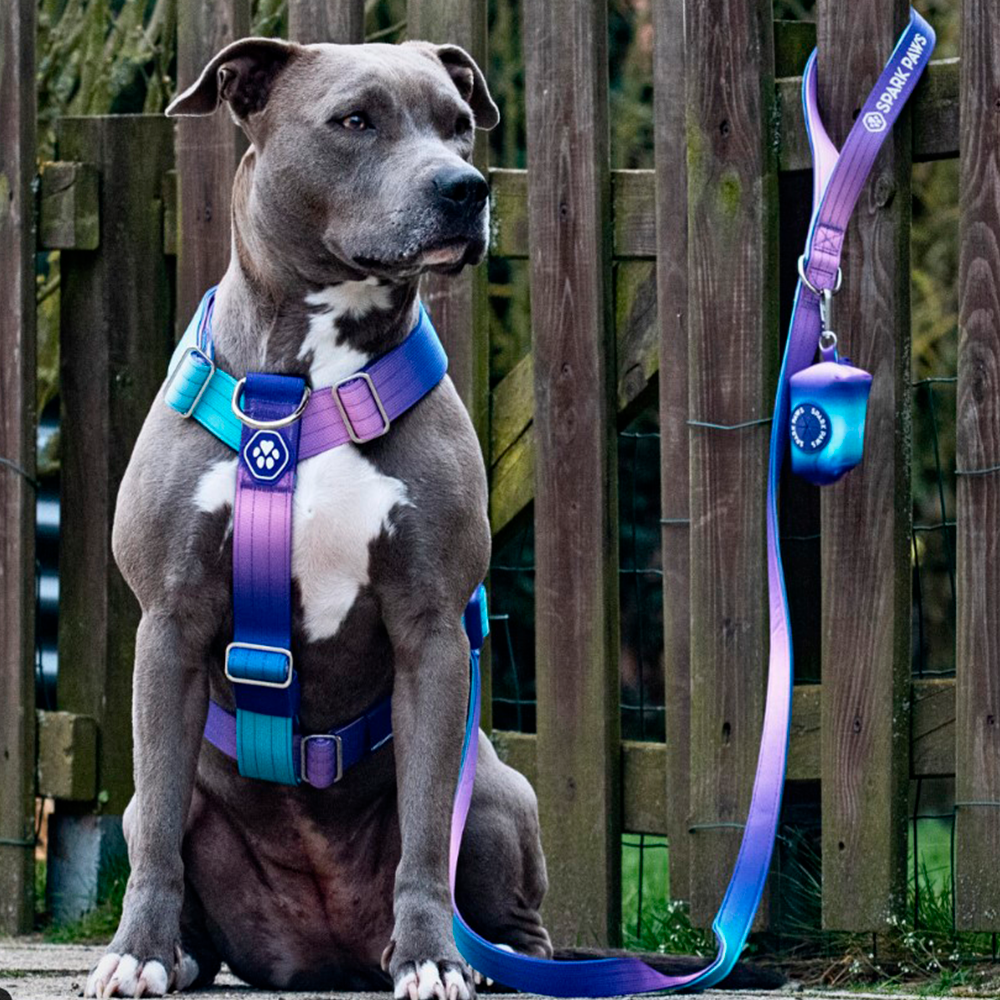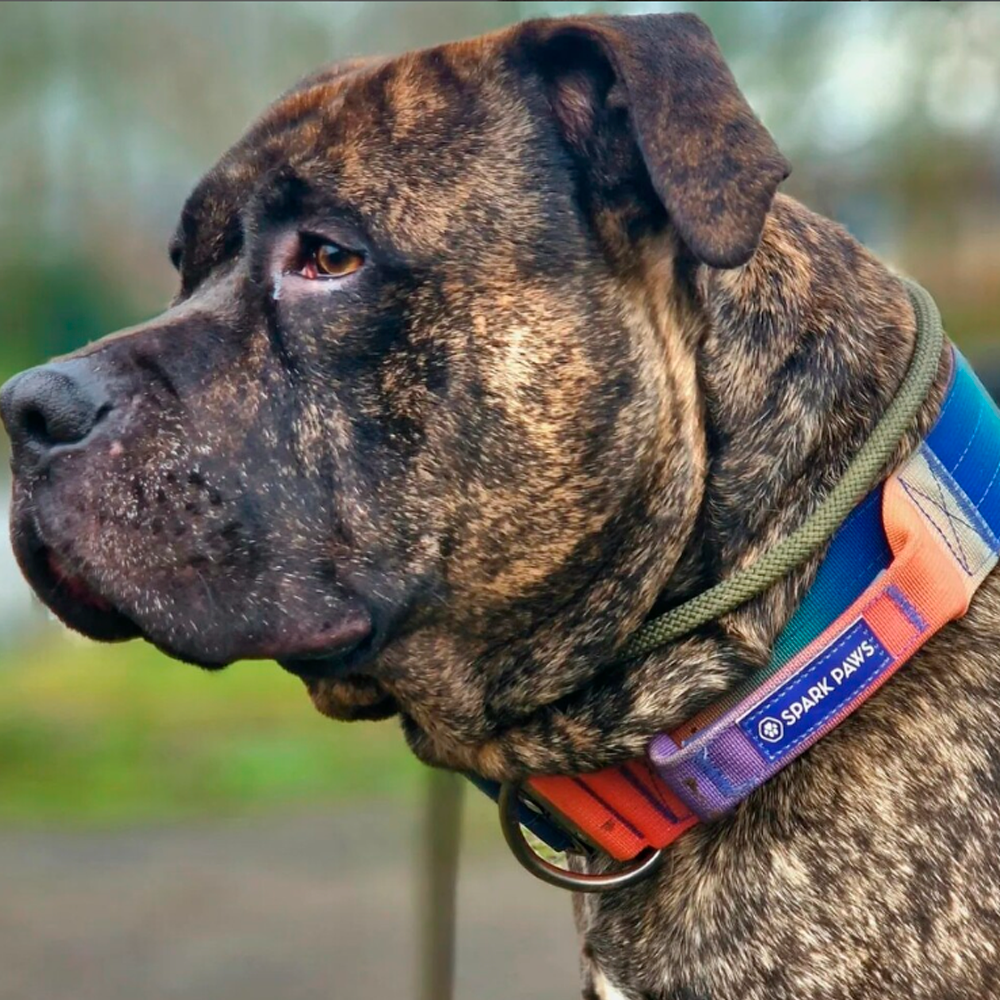Best Harness for Dogs That Pull: Top Picks for Control & Comfort
Walking your furry friend should be a relaxing and bonding activity, but for many dog owners, dealing with a dog that pulls on the leash can turn this into a stressful ordeal.
Not only is constant pulling a nuisance, but it can also lead to long-term health issues for both the dog and the owner.
Recognizing the reasons behind this behavior and equipping yourself with the right training tools, such as the best harness for a dog that pulls, can make a world of difference. In this article, we'll explore why dogs pull on their leashes and discuss a game-changing solution:
Why Do Dogs Pull on Their Leashes?
Before diving into the solution, it's crucial to understand why your canine companion pulls during walks. Here are some common causes:
Exploration:
Ever notice how your pup’s nose is always on the ground or in the air? That's their powerful sense of smell picking up every interesting scent in the vicinity. This natural curiosity drives them to pull towards these stimuli in hopes of further investigation.
Pressure Response:
Just a collar around the neck may cause some dogs to pull against the pressure as a reflex. This is often referred to as the opposition reflex, and it can exacerbate pulling behavior.
Learned Behavior:
If pulling has ever gotten your dog what they want, such as getting closer to another dog or reaching that interesting bush faster, they'll likely continue to do so.
Anxiety:
Pulling can be an indication of stress or fear. Some dogs might attempt to escape the source of their anxiety by pulling away.
Discomfort:
If your dog is in pain or discomfort1, they may pull as a way to communicate their distress or to get home quicker where they feel safe.
Recognizing these reasons is the first step to addressing the pulling behavior, and the next step is finding the right tools to help mitigate it.
Training and Consistency: The Path to Pull-Free Walks
Behavioral training is essential for teaching your dog not to pull and many dog trainers recommend consistency in your walking routine as key. Rewarding your dog for maintaining a proper walking position and stopping every time they begin to pull teaches them that they won't get to their destination any faster with this behavior.
It's not just about the best harness for dogs that pull, but also about the consistent and patient training that accompanies it.
The Harness Solution: Sparkpaw’s Comfort Control No-Pull Dog Harness
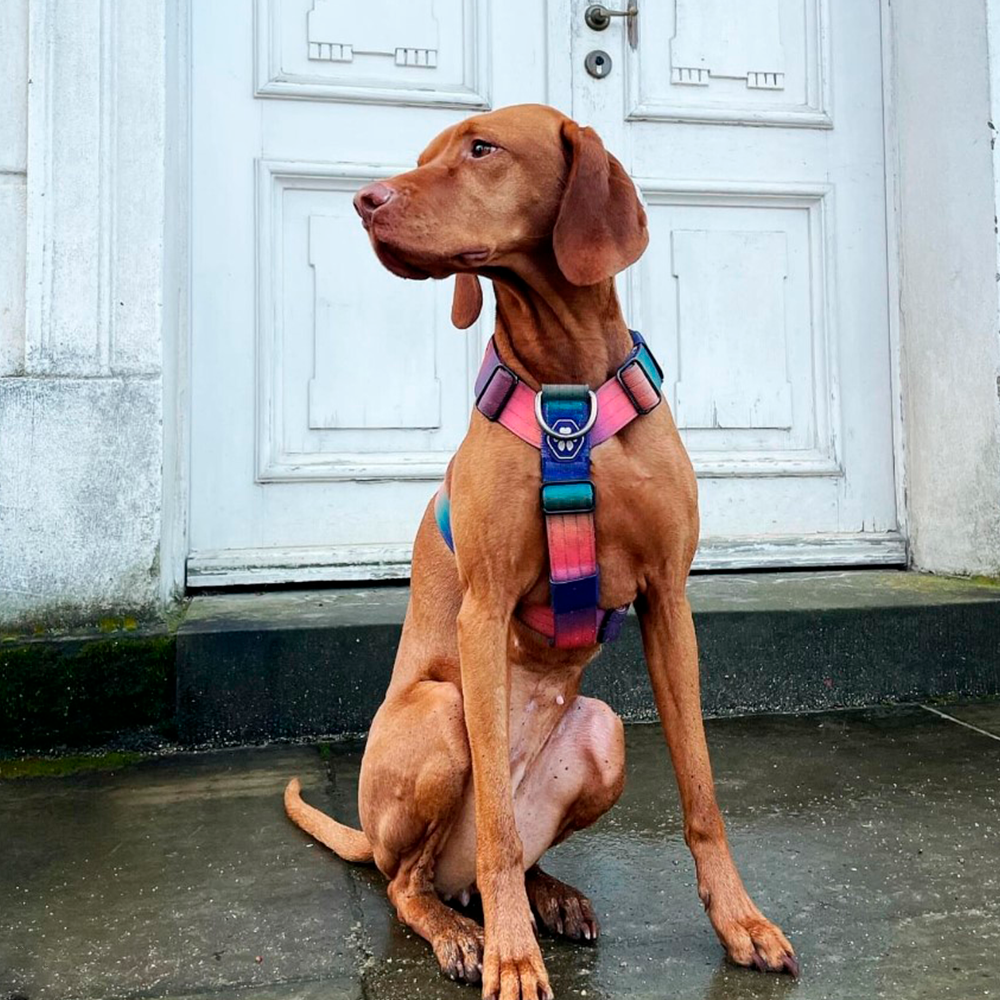
When combating the pulling problem, the gear you choose can have a significant impact. Harnesses tend to vary, and unlike other options, such as the Ruffwear Front Range Harness, Sparkpaw’s Comfort Control No-Pull Dog Harness stands out for several reasons:
Design for Comfort:
This dog harness is designed to distribute pressure evenly across the shoulders and the dog's body to prevent discomfort and potential injuries to the dog's throat or neck.
Leash Attachment Point:
Various leash attachment points strategically provide better control over your pet without causing discomfort or encouraging pulling. A back attachment ring and a front clip offer options for training and managing your dog during walks.
Adjustability for the Perfect Fit:
With four adjustment points, you can ensure the harness fits snugly without rubbing or irritating your pet's skin. A proper fit is crucial for effectiveness and safety.
Using Sparkpaw’s Comfort Control No-Pull Dog Harness as a training tool, alongside consistent training, can help address the unwanted behavior of dogs that pull.
Other Harness Features to Consider
While the Sparkpaw’s harness offers an excellent solution, here are additional features to look for in all the harnesses that can complement your training efforts:
Chest Plate:
A well-designed chest plate can help to distribute pressure evenly and provide comfort during walks.
Quick Release Buckles:
For ease of use, quick-release buckles are a must. They allow for fast and easy fitting and removal of the harness.
Head Collars:
For some dogs, head collars may be effective as they provide control of the dog's head, guiding their direction without applying pressure to the throat.
D rings:
For ease of control, D rings are a must. They allow for diverse leash attachment points and offer more control over the dog’s movements.
Range Harness:
If your dog covers a lot of ground, a range harness with room for movement might be suitable.
Is your small dog a big puller? Don't let their size fool you – little legs can tug hard! Upgrade your walks with our Activewear No-Pull Harness, designed for the smallest of adventurers. Click here to give your small dog the freedom to explore without the pull.
Understanding No-Pull Dog Harnesses
Let's address some questions many pet owners have:
Q: What is a no-pull dog harness, and how does it work?
A: Our no-pull dog harness is an ingeniously designed accessory that mitigates pulling by redirecting your dog's energy. When your dog attempts to pull, the front D ring on the harness redirects its pulling force to the side or back, making it difficult for them to move forward forcefully. This harness is not only useful for training but also for daily walks using the back D ring, and for allowing restraining free movement with the rear D ring. It's a versatile and essential tool for dog owners dealing with pullers.
When choosing a harness, comfort is just as important as functionality. If your dog has special needs, such as sensitive skin or allergies, you might be wondering:
Q: Is this harness suitable for dogs with sensitive skin or allergies?
A: Absolutely. We understand that some dogs have delicate skin, which is why our harnesses are equipped with a Neoprene padded lining. This material ensures your pet's skin is protected, providing a soft, quick-drying, and odor-resistant fabric that keeps your dog comfortable and reduces the risk of skin irritations.
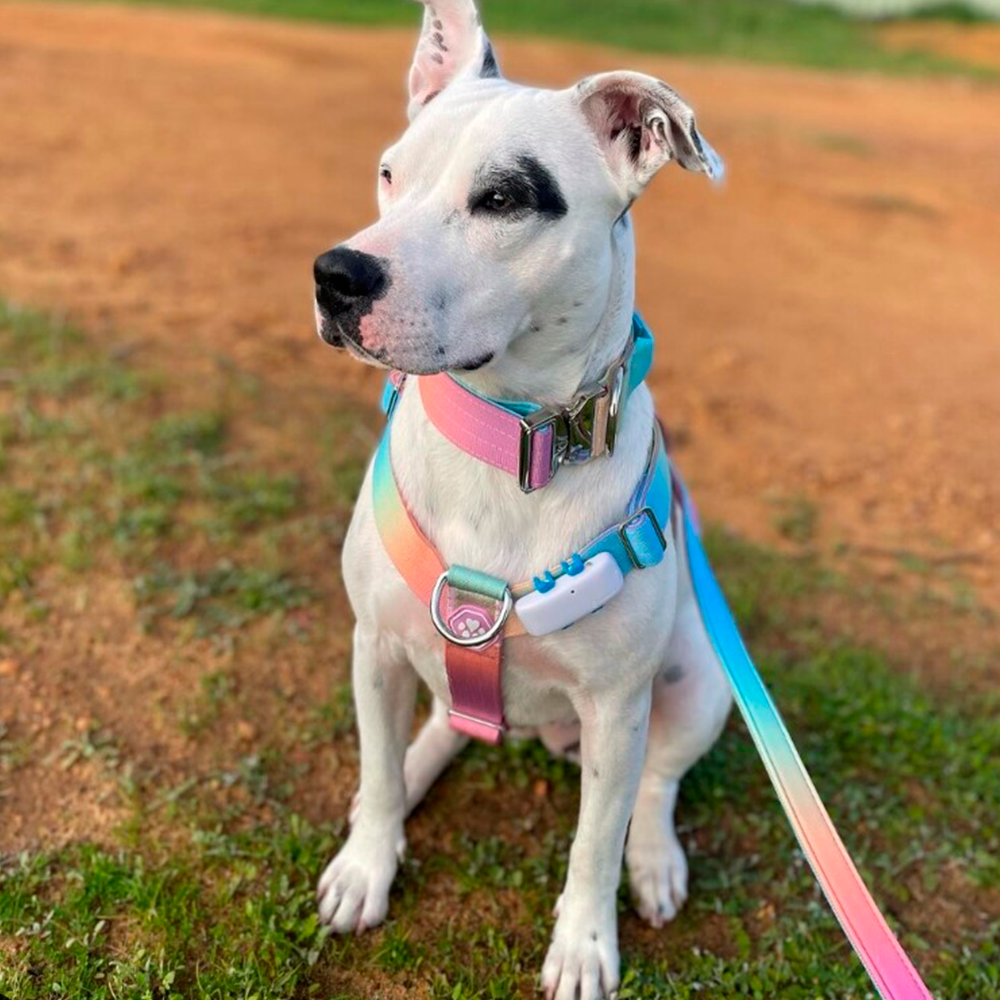
Adjustability is a crucial feature for any harness, ensuring it can adapt to dogs of different sizes and shapes, including growing puppies. Thus, you might ask:
Q: Is the harness adjustable?
A: Yes, adaptability is a priority. Our harness offers several adjustment points around the neck, torso, and waist, which includes a comfortable belly strap to guarantee a snug and secure fit. This is particularly important for growing dogs that require changes in the harness size as they develop.
We understand that dogs come in various shapes and sizes, and finding the right fit is crucial for both comfort and safety. Whether you have small dogs or big dogs, it is always best to contact Sparkpaws before making a purchase. Our team is dedicated to helping you select the correct harness for your dog's size, ensuring optimal comfort and effectiveness. Reach out to us, and we'll guide you through the process of finding the perfect fit for your furry friend.
It's also understandable to want assurance about the durability and support available when investing in a quality harness. You may wonder:
Does this harness come with a warranty or guarantee?
A: We stand behind our products. Our harness includes a 6-month guarantee against manufacturing defects, although it doesn't cover normal wear and tear or damage caused by your dog. Should you encounter any issues or have concerns with your harness, our dedicated customer service team is available at [email protected] to assist you.
Harnessing the Benefits of the Right Tool
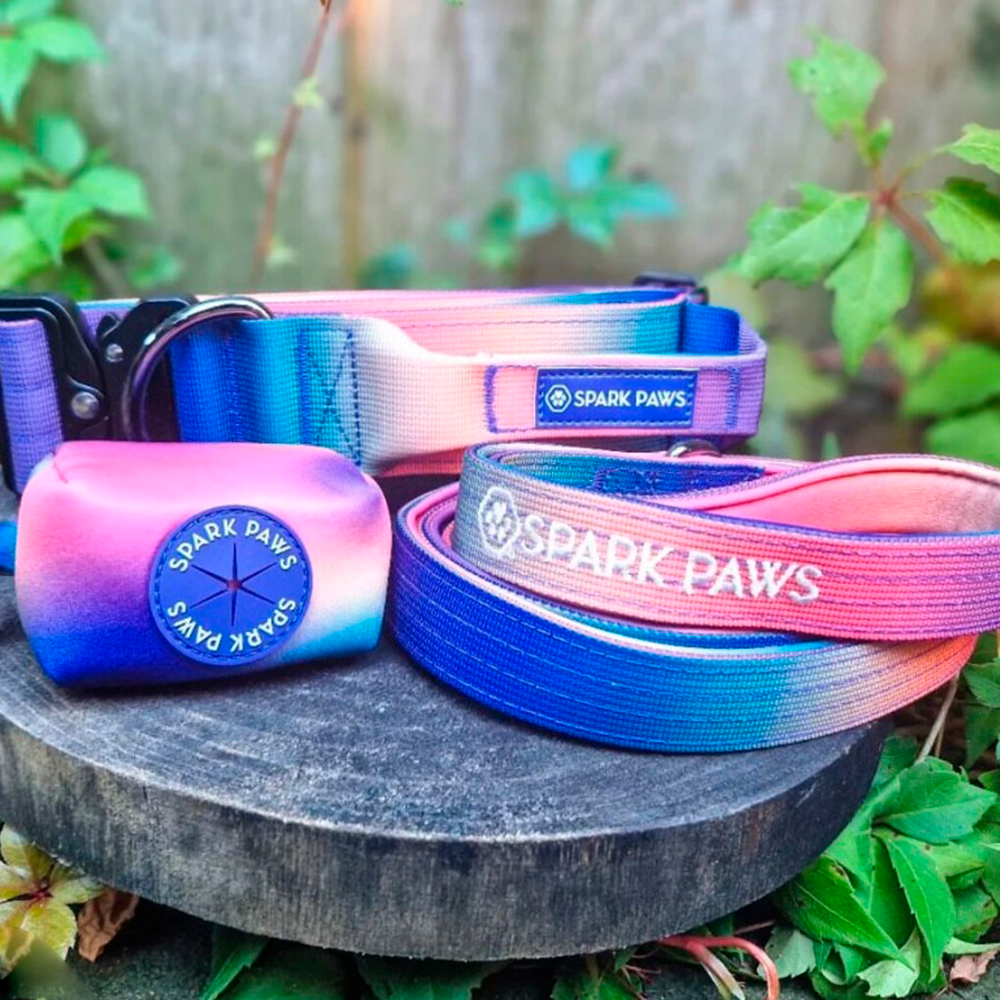
Incorporating these Q&As into your knowledge base helps reassure you that Sparkpaw’s Comfort Control No-Pull Dog Harness isn't just another dog accessory; it's a thoughtfully crafted solution for a common concern among dog owners. Let's delve deeper into why selecting the right harness can lead to more enjoyable and safe walks for you and your dog.
A quality harness provides better control over your pet than just a collar. When a dog pulls, a traditional collar concentrates pressure on the dog's neck, which could potentially lead to injury. In contrast, a harness that is properly fitted distributes that pressure more evenly across the dog's body, reducing strain on any one point and leading to a safer and more controlled walking experience for both you and your furry companion.
Maximizing the Use of Your No-Pull Harness with Tips to Prevent Dog Pulling
Teaching your dog to walk calmly on a leash without pulling is an achievable goal that requires patience, practice, and the right approach.
Understanding the individuality of your dog's learning style, a key consideration when teaching your dog to walk on a leash without pulling is recognizing that not every technique will suit every dog. The world of dog training is diverse, and what works for one dog might not be effective for another.
Success in dog training often hinges on discovering what drives your dog and leveraging that motivation. If you're wondering how to stop a dog from pulling on the leash, remember that the most effective strategy often involves a combination of techniques.
To get the most out of your no-pull harness, remember to pair it with consistent training. Dogs are creatures of habit, and most dogs can be taught to walk nicely on a leash with the right approach. Here are some tips for harnessing the potential of the best harness for dogs that pull:
- Start Slowly: Introduce the harness to your dog in a calm, positive environment. Let them sniff and inspect it to associate the harness with a positive experience.
- Minimize Distractions: Start training in a quiet environment to help your dog focus.
- Change Direction: If your dog starts to pull, change direction to redirect their focus onto you. This reinforces that they need to follow your lead rather than lead the way.
- Short, Regular Sessions: Keep training sessions brief but consistent to maintain your dog’s attention.
- Patience: Understand that training takes time and each dog learns at their own pace.
- Reward System: Figure out what motivates your dog, such as treats or praise, and use it to reward good behavior.
- Consistency: Be consistent with your commands and reactions to ensure your dog understands what is expected. Regular practice with commands and leash manners is essential. Dedicate time each day to work on walking techniques and reinforce appropriate behavior.
- Communication: Use clear and consistent words, tone, and body language to give cues to your dog. Use these consistently so your dog understands what is expected.
- Behavior Proofing: Test your dog’s behavior in different situations to ensure they respond reliably.
- Emotional Control: Stay calm and controlled, as dogs can sense your emotions and react accordingly.
- Keep the Leash Short (But Not Tight): Keeping the leash short allows you to manage and correct your dog’s position more easily, yet it should be loose enough to form a U shape to prevent constant tension.
- Essential for every walk: our convenient Poop Bag Holder! Never be caught unprepared again.
Keep your walks clean and hassle-free. Attach it to your Sparkpaw’s harness or leash, load it up, and you’re ready to go. It’s the perfect companion for responsible and stylish pet parents. Get Yours Today
Remember, shifting your dog’s leash walking habits takes time, and it's okay to have setbacks. Stay positive, and celebrate the small victories along the way.
Conclusion
Confronting the issue of dogs that pull is a matter of understanding the behavior, applying the right training techniques, and equipping yourself with the best tools for success. The Sparkpaw’s Comfort Control No-Pull Dog Harness is more than just a piece of equipment; it's a pathway to a better walking experience for both you and your dog.
Remember, dealing with a dog that pulls is a common challenge for pet owners, but with the right approach and tools, you can teach your dog to walk beside you calmly and safely. Embrace the journey of training and witness the transformation in your daily walks.
Remember, you should always follow the manufacturer’s suggestions for the proper use and care of your harness to ensure the safety and comfort of your pup.

